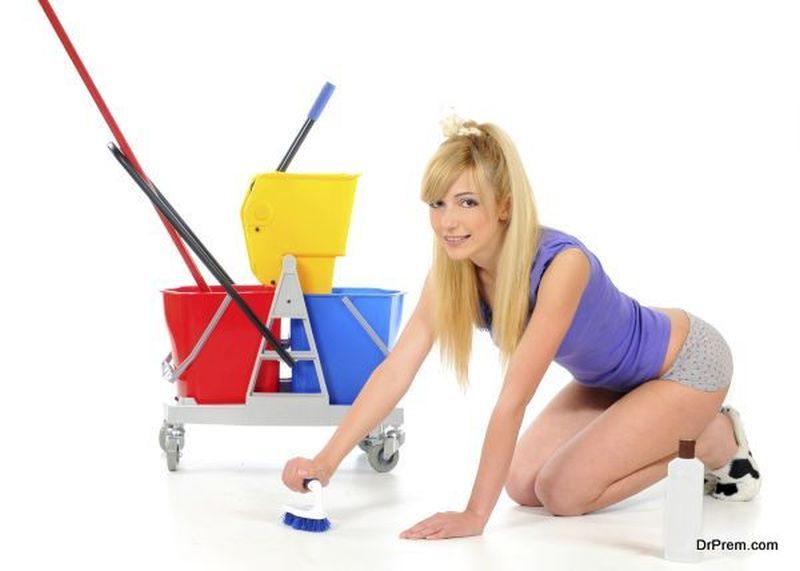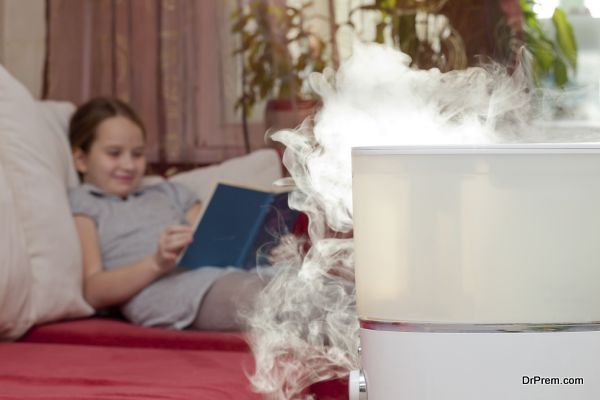We think of our homes as safe and secure places for the ones we love. But did you know that there are potential health risks right inside your house?
There are a variety of ways to ensure that your home remains a safe and healthy place. Let’s take a look at some health issues that can result from common household practices. As well as preventative methods and precautions you can take.
Carbon Monoxide Detectors
Most homes are equipped with smoke detectors that alert your family to a potential fire in the home. But do you also have a carbon monoxide detector? If not, you should and here’s why.
Carbon monoxide is an odorless but extremely harmful substance. If your home is infected with this undetected gas, you and your family are at risk of falling extremely ill. In fact, carbon monoxide can have fatal effects.
Signs of carbon monoxide poisoning include dizziness, weakness, upset stomach, and other flu-like symptoms. The most dangerous part of carbon monoxide poisoning is that if you are sleeping when the gas is released, it can actually prove fatal in your sleep – long before you show signs or symptoms
Installing a carbon monoxide detector in your home can be the difference between life or death. Carbon monoxide is released through fumes found in common household items like furnaces, gas range stoves, lanterns, and fireplaces. Installing a detector will help keep you and your family healthy and safe.
Dusting
No, we aren’t just talking about the fact that this is a tedious household chore. Dusting is actually extremely important for maintaining your homes overall safety and ensuring the health of its inhabitants. Why?
Because that inconvenient dust covering the surfaces in your home can actually contain chemicals that post some major health risks. The most common side effect of a dusty home is dust mites, which can trigger allergic reactions for those who suffer from this type of intolerance.
To help you understand how dust can contain so many harmful components, you need to know that dust is the collection of all organic and inorganic particles floating around our homes. Most dust is actually comprised of dead skin particles. But among those particles are a whole host of other things which include, but are not limited to:
- Paint particles
- Cigarette smoke
- Plant and insect parts
- Rodent waste
- Fabric fibers
- Asbestos
- Sand and soil particles
Of course, the levels of these components vary greatly based on your home and its activity. But don’t be fooled into thinking a simple dust rag is enough to remove these toxins from your home. Use a duster that contains ultra micro fibers that will help pick up dust particles and not just move them around.
Without properly addressing the dust in your home, you can suffer from a variety of uncomfortable symptoms including asthma, itchy eyes, coughing, and runny nose. But overexposure to dust containing certain particles can actually impact brain development and reproductive hormones.
Humidifier
You may not realize the importance of moist air in your home. Humidifiers are an essential item that can help ease respiratory issues, bloody noses, dry cracked lips, skin irritation, and a host of other common ailments.
Many homes have dry air and don’t realize it. This air can manifest itself in any of the above health complications, in addition to difficulty breathing. But you need to careful to keep your humidifier clean and at an appropriate setting. Dirty humidifiers can produce bacteria and mold, which might worsen already poor health conditions.
The humidity in your home, or the level of water vapor in the air, should be somewhere between 30 and 50 percent, depending on the season and outside temperatures. If the humidity is too low in your home, issues such as the ones named above can occur. But if the humidity level in your home is too high, you might feel stuffy and notice condensation on the walls, furniture and floors. This additional moisture can lead to mold and bacteria build up, which will impact those with allergies most.
Clean Surfaces and Floors
It’s likely that you routinely wipe down your counters in the kitchen and wash your floors. But is your routine enough? And why is it important to properly disinfect these surfaces?
It’s no secret that your kitchen can be a dirty place. It’s where you cook, prep, and store food. It’s basically a playground for bacteria. That’s why it’s so important to clean all surfaces, utensils, and most importantly your hands both before and after working in the kitchen. Using hot soapy water to clean these items is a great first step. To protect your home even further, use 1 teaspoon of unscented bleach to every quart of warm water to spray over surfaces. Apply this solution to clean surfaces and let it air dry.
Not properly addressing bacteria in the kitchen can lead to a laundry list of medical issues and complications. Some of the most common include:
- Salmonella
- Coli
- Norwalk Virus
Salmonella is unfortunately extremely common and one of the main causes of food poisoning. Salmonella can come from contaminated raw foods, eggs, meats, or unpasteurized milk and juice. Those infected with this bacteria will experience diarrhea, vomiting, abdominal pain, and fever.
- Coli is another bacterial infection and is contracted from the same abovementioned food products. The health effects are similar to that of Salmonella, minus the fever.
The Norwalk Virus is the most common cause of gastroenteritis and is most commonly found in shellfish or produce. This virus is passed through the vomit or feces of an infected person, which only solidifies the extreme importance of routine hand washing practices. Practicing diligent cleaning practices in the kitchen can help prevent these types of bacteria from developing and spreading.
Keeping clean floors in your home is another important component of a healthy house. Many people walk in and out of the home without removing their shoes. The bottom of a person’s shoe has come in contact with countless dirty and infected surfaces throughout the day. Shoes can contain feces, dirt, chemicals, and a wide range of other contaminants that you might not be aware of.
The dust and dirt from your countertops can also easily spread to the floor. And if you have small children who spend most of their time on the floor, you’ll want to ensure the surfaces are clean and free from germs. Wash hardwood floors using 1 cup of vinegar for every one gallon of water. Soap and water is sufficient for cleaning both linoleum and tile floors.
Be Aware of Your Surroundings
Your first line of defense in maintaining a healthy and safe home environment is knowledge. Look at your surroundings for any potential health risks. Where there’s bacteria or harmful elements, there is the opportunity for health risks and medical complications.
Do your research and be proactive about addressing potential health hazards in your home.
Article Submitted By Community Writer






